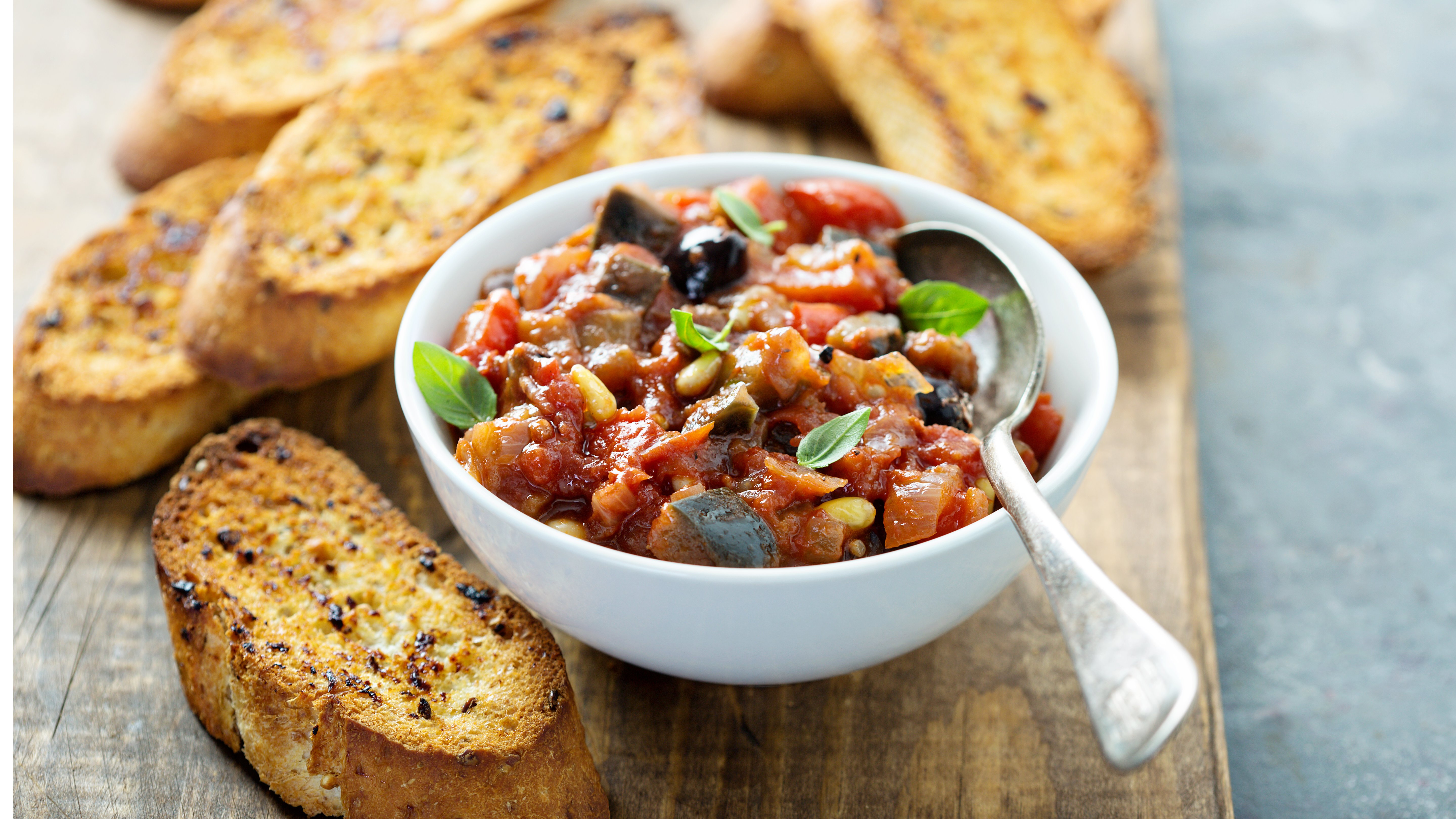
This delicious aubergine caponata pasta is slow cooked over a few hours so the vegetables become beautifully tender and flavours really deepen.
It's simple to make and at under 250 calories per portion, it's one of our popular low calorie pasta recipes. Caponata is originally a Sicilian dish and is considered one of the best and most quintessential of the island's specialities. There are hundreds of versions of it - probably as many as there are local families. Sicilian cooking is about punchy, bold flavours, which is why there is so much in this - capers, olives, chilli, tomato and pine nuts all add contrasting flavours. We've added orzo here to make the dish more substantial. If you prefer, you can serve it on bread (or just have bread alongside for mopping up juices.
Ingredients
- 400g baby aubergines, halved or quartered
- 2 onions, chopped
- 2 garlic cloves, crushed
- 1 red chilli, thinly sliced
- 2x400g can tomatoes
- 1 vegetable stock pot
- 2 tbsp red wine vinegar
- 25g black olives, chopped, plus extra to garnish
- 25g capers, drained
- 200g orzo (rice-shaped pasta)
- 35g toasted pine nuts
- handful chopped parsley and oregano
WEIGHT CONVERTER
Method
- Put the aubergine, onion, garlic, chilli, tomatoes, 1 can of water, stock pot, vinegar, olives and capers into a slow cooker. Cook on low for 3 hrs.
- Alternatively, put into a casserole with a scrunched up piece of wet greaseproof paper inside the lid. Cook in the oven on its lowest setting for 3 hrs.
- Add the orzo, stir and cook for a further 30 mins. Once tender, serve topped with remaining olives, pine nuts and herbs.
Top tip for making slow cooker aubergine caponata pasta
Add some cooked meat to this dish right at the last few minutes. Heat through until the meat is piping hot and serve.
You might also like...
Parenting advice, hot topics, best buys and family finance tips delivered straight to your inbox.

Octavia Lillywhite is an award-winning food and lifestyle journalist with over 15 years of experience. With a passion for creating beautiful, tasty family meals that don’t use hundreds of ingredients or anything you have to source from obscure websites, she’s a champion of local and seasonal foods, using up leftovers and composting, which, she maintains, is probably the most important thing we all can do to protect the environment.
